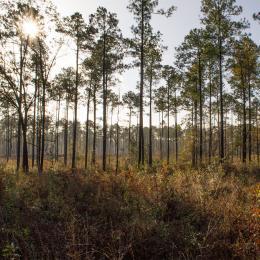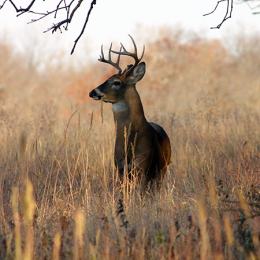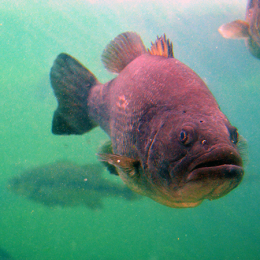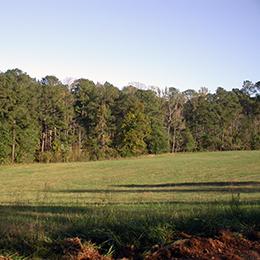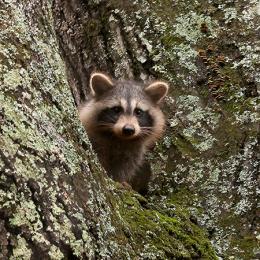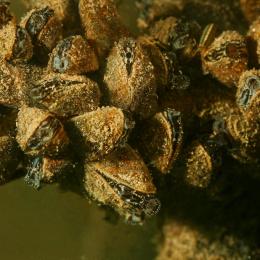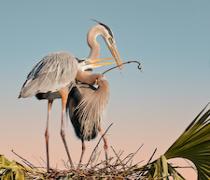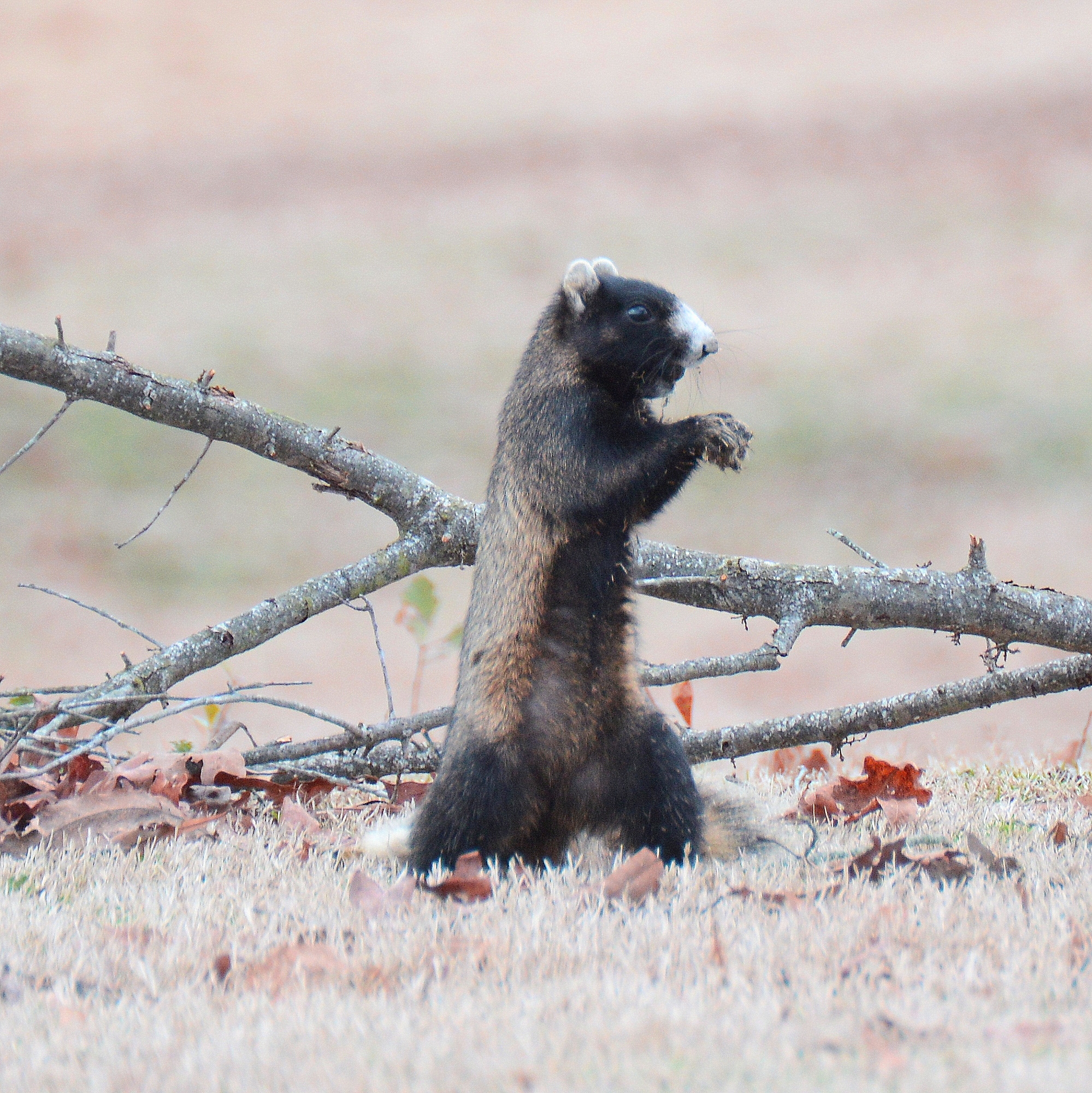
Fox Squirrel (Terry W. Johson)
By Terry W. Johnson
For most Georgians, whenever the subject of squirrels finds its way into a conversation, gray squirrels immediately come to mind. This is understandable since it is the squirrel most commonly seen throughout our state.
It’s the squirrel that regularly raids our bird feeders, attacks our tomatoes and eats its share of pecans. However, Georgia is also home to the largest tree squirrel in North America. Of course, I am referring to the fox squirrel (Sciurus niger).
It is easy to tell the two squirrels apart. The fox squirrel is 20 percent larger than the gray squirrel. It can weigh as much as 2-3 pounds or more, measure up to 27.5 inches long (body length) and sport a bushy tail that can be 13 inches long.
This super-sized squirrel comes in three color phases and has so many variations folks often say no two look alike. Throughout Colorado, east Texas and the Dakotas most fox squirrels sport gray backs and bright rust-colored hair on their undersides. A study conducted in South Carolina found that 67 percent of the fox squirrels reported during the survey were gray, with about 31 percent black and only 2 percent brown. The South Carolina researchers also found that black facial masks and white patches on the tips of the ears, nose, and paws were commonly seen in all color phases.
Here in Georgia, we see more predominantly black squirrels with white-tipped tails – and white blazes on their faces – than anywhere else in the country.
We call this mammal the fox squirrel because its coat resembles the red and gray pelage of our native gray fox. In some sections of the country, it is also called the raccoon or monkey-faced squirrel.
Another thing that separates fox squirrels from gray squirrels is that their teeth, bones and flesh shine pink when viewed under ultraviolet light. This trait is so rare in mammals that researchers in Florida use it to identify the remains of fox squirrels at archaeological sites.
Fox squirrels prefer mature pine and mixed pine-hardwood forests with open understories and ground cover. They can also be found in urban and suburban habitats. One study showed that fox squirrels seem to prefer locations that feature live oaks, trees with larger diameters and canopies, trees with large natural cavities, and limited areas of pavement (such as sidewalks and roads), grass and buildings.
A key component of their preferred habitat is the presence of tall trees that have cavities. The squirrels use these cavities as dens (called dreys), both to raise their young and as shelter against the elements. When cavities are unavailable, however, they will build nests of leaves.
The fox squirrel has a varied diet. It dines on foods ranging from frogs and insects to dead fish and an occasional bird egg. Among other things, they also eat acorns, hickory nuts, beech seeds, tree buds, fruits, the flowers on trees, the inner bark of trees, mulberries, hawthorn seeds and green pinecones.
Like gray squirrels, they will cache food. By so doing, the fox squirrel inadvertently helps seed trees and other forest plants.
The fox squirrel spends a lot of its time on the ground within a home range that can vary from 10-50 acres. Females have smaller home ranges than males.
Interestingly, since the fox squirrel sweats through the bottom of its feet, during hot weather it will sometimes leave wet tracks on rocks, sidewalks and other smooth surfaces.
When a fox squirrel senses that a predator poses a threat, it will stand up, rapidly shake its tail and let out a scream.
Whenever I encounter a fox squirrel, I am left with the impression that they are not very athletic. Instead of rapidly scampering off like a gray squirrel, it often retreats at a more leisurely pace. When pressed, however, it can run at speeds up to 20 mph and leap as far as 8 feet. Fox squirrels are also capable of leaping from a tall tree, freefalling at least 20 feet and landing on a nearby tree.
One observer watched a fox squirrel fall out of a tree some 100 feet up, hit the ground and then scamper away, apparently uninjured.
When you stop and think about it, the fox squirrel is indeed an impressive animal. I guess because most Georgians rarely see one, we do not really get a chance to see how special this animal is. This realization was brought home to me some 25 years ago by the comments made by a woman from England who was visiting the U.S. with her husband. By chance, they stopped by the Georgia DNR office at the Rum Creek Wildlife Management Area for directions to the “Fried Green Tomatoes” restaurant – the Whistle Stop Café in nearby Juliette.
Before finding their way to Monroe County, they had been to the Everglades to see alligators and wading birds, explored the Okefenokee Swamp and visited a number of historic spots along the way.
To make a long story short, while talking with them I learned they enjoyed wildlife viewing. This prompted me to ask if they would like a brief tour of Rum Creek WMA. They accepted my invitation and off we went. As we drove along I pointed out various birds, and a white-tailed deer ran across the road in front of us. As luck would have it, we also happened onto a fox squirrel standing upright on the grassy road shoulder. After watching it for several minutes, the woman said seeing the fox squirrel was the highlight of their trip.
I, for one, would love to host fox squirrels in my backyard. However, even if I erected a squirrel box, provided them with sunflower seeds and other delicacies, there is little chance they would become a part of my backyard wildlife community. The reason is that I simply do not have the habitat they prefer. Consequently, I’ll have to be content catching a rare glimpse of one as it heads for some unknown destination.
When I do spot one, I cannot help but recall what that British tourist said years ago. I never give these animals just a passing glance. And I’m convinced more than ever that the fox squirrel is truly an impressive animal.
Terry W. Johnson is a retired Georgia DNR program manager and executive director of The Environmental Resources Network, or TERN, the friends group of DNR’s Wildlife Conservation Section. Check out past columns, his Backyard Wildlife Connection blog and his book “A Journey of Discovery: Monroe County Outdoors.” Permission is required to reprint a column.







